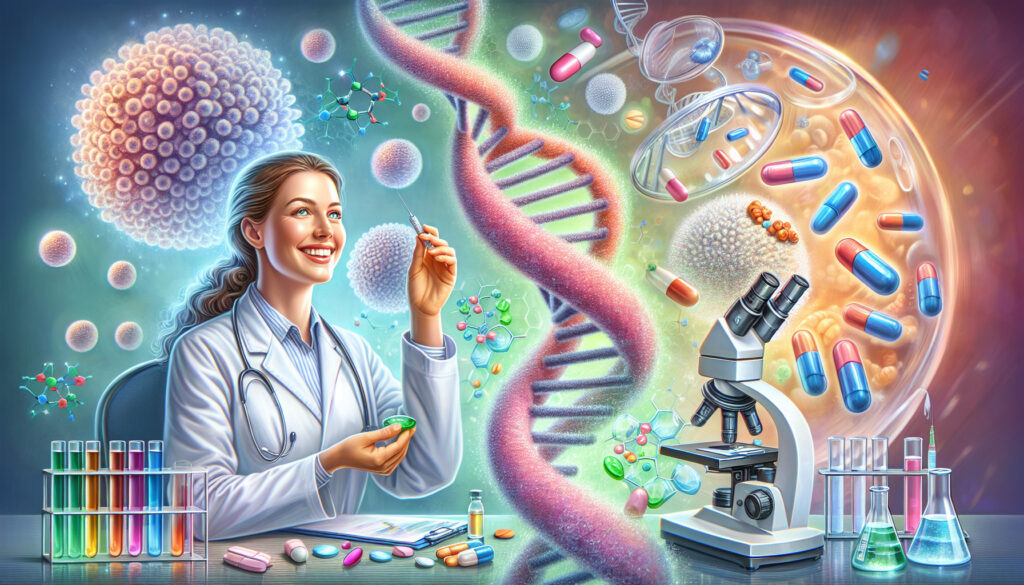
Have you ever wondered how vaccine work their magic to protect us from dangerous diseases? 🤔 With the recent global focus on vaccination, it’s more important than ever to understand the different types of vaccines and how they safeguard our health. From the traditional methods we’ve relied on for decades to cutting-edge technologies that have revolutionized immunization, the world of vaccines is fascinating and diverse.
In this comprehensive overview, we’ll explore seven distinct types of vaccines, each with its unique approach to stimulating our immune system. Whether you’re curious about the live attenuated vaccines that have been around for generations or intrigued by the groundbreaking mRNA vaccines that made headlines during the COVID-19 pandemic, we’ve got you covered. 💉🧬 By the end of this article, you’ll have a clear understanding of how these different vaccines work to keep us healthy and protected.
Join us as we dive into the world of vaccines, exploring everything from inactivated and subunit vaccines to the latest advancements in DNA and viral vector technologies. Let’s unravel the mysteries behind these life-saving innovations and discover how they’re shaping the future of global health. 🌍🔬
Live Attenuated Vaccines
Live attenuated vaccines are one of the most effective types of vaccines available. They contain weakened forms of the live virus or bacteria, carefully modified to stimulate a robust immune response without causing the actual disease.
A. Examples of diseases prevented
Live attenuated vaccines have been successfully used to prevent several diseases, including:
- Measles, Mumps, and Rubella (MMR vaccine)
- Rotavirus
- Yellow Fever
- Chickenpox (Varicella)
- Influenza (nasal spray flu vaccine)
B. Advantages and effectiveness
These vaccines offer several advantages:
- Strong and long-lasting immunity
- Often provide lifelong protection with just one or two doses
- Closely mimic natural infection, stimulating a more comprehensive immune response
| Advantage | Description |
|---|---|
| Potency | Elicits strong cellular and antibody responses |
| Duration | Provides long-lasting, often lifelong immunity |
| Efficiency | Typically requires fewer doses than other vaccine types |
C. Potential risks and considerations
While generally safe, live attenuated vaccines do have some potential risks:
- Not suitable for people with weakened immune systems
- Rare possibility of reverting to a more virulent form
- May cause mild symptoms resembling the disease they prevent
D. How they work
Live attenuated vaccines work by:
- Introducing a weakened form of the pathogen into the body
- Allowing limited replication to stimulate the immune system
- Triggering the production of antibodies and memory cells
- Providing protection against future infections with the wild-type pathogen
By closely mimicking natural infection, these vaccines train the immune system to recognize and fight off the actual disease-causing organisms effectively.
Now that we’ve explored live attenuated vaccines, let’s move on to another important category: inactivated vaccines.

Inactivated Vaccines
Inactivated vaccines play a crucial role in protecting against various diseases. Let’s explore their production process, common examples, safety profile, and duration of immunity.
A. Production process
The production of inactivated vaccines involves several steps:
- Grow the target pathogen in large quantities
- Inactivate the pathogen using heat, chemicals, or radiation
- Purify the inactivated pathogen
- Formulate the vaccine with adjuvants and stabilizers
This process ensures that the pathogen is no longer infectious while maintaining its ability to stimulate an immune response.
B. Common inactivated vaccines
Here are some widely used inactivated vaccines:
| Vaccine | Disease Prevented |
|---|---|
| Polio (IPV) | Poliomyelitis |
| Hepatitis A | Hepatitis A virus infection |
| Rabies | Rabies virus infection |
| Influenza (shot) | Seasonal flu |
| Cholera | Cholera |
C. Safety profile
Inactivated vaccines are generally considered very safe for several reasons:
- Cannot cause the disease they protect against
- Suitable for immunocompromised individuals
- Lower risk of adverse reactions compared to live vaccines
- Stable and less likely to be affected by storage conditions
However, like all medical interventions, they may cause mild side effects such as soreness at the injection site or low-grade fever.
D. Duration of immunity
The duration of immunity provided by inactivated vaccines varies:
- Some offer long-lasting protection (e.g., Hepatitis A)
- Others require booster doses to maintain immunity (e.g., Influenza)
Factors affecting immunity duration include:
- The specific pathogen
- Vaccine formulation
- Individual immune response
Regular monitoring and follow-up with healthcare providers ensure optimal protection through timely booster doses when necessary.
With this understanding of inactivated vaccines, let’s move on to explore subunit, recombinant, and conjugate vaccines, which represent another important category in vaccine technology.

Subunit, Recombinant, and Conjugate Vaccines
Now that we’ve explored live attenuated and inactivated vaccines, let’s delve into the world of subunit, recombinant, and conjugate vaccines. These innovative vaccine types offer unique advantages in terms of safety and efficacy.
Differences between these types
Subunit, recombinant, and conjugate vaccines differ in their composition and production methods:
| Vaccine Type | Composition | Production Method |
|---|---|---|
| Subunit | Specific parts of the pathogen | Isolated from the whole pathogen |
| Recombinant | Specific proteins | Produced using genetic engineering |
| Conjugate | Weak antigens linked to strong antigens | Chemical bonding of different components |
Targeted immune response
These vaccines elicit a highly targeted immune response by focusing on specific components of pathogens. This approach allows for:
- Reduced risk of adverse reactions
- Enhanced efficacy against specific antigens
- Customized immune responses for different pathogens
Examples in current use
Several subunit, recombinant, and conjugate vaccines are currently in use:
- Hepatitis B vaccine (recombinant)
- HPV vaccine (recombinant)
- Pneumococcal conjugate vaccine
- Hib (Haemophilus influenzae type b) conjugate vaccine
Benefits for specific populations
These vaccines offer particular advantages for certain groups:
- Immunocompromised individuals: Reduced risk of infection from the vaccine itself
- Infants and young children: Improved immune response to certain pathogens
- Elderly: Enhanced protection against specific diseases
With their targeted approach and improved safety profiles, subunit, recombinant, and conjugate vaccines represent a significant advancement in vaccine technology. Next, we’ll explore toxoid vaccines, another important category in the vaccine landscape.

Toxoid Vaccines
Toxoid vaccines are a crucial part of our immunization arsenal, offering protection against diseases caused by bacterial toxins. These vaccines work by introducing a modified version of the toxin, called a toxoid, to stimulate the immune system without causing harm.
Understanding Toxoids
Toxoids are bacterial toxins that have been chemically modified to remove their harmful properties while retaining their ability to provoke an immune response. This process, known as detoxification, typically involves treatment with formaldehyde or heat. The resulting toxoid is safe for use in vaccines but still effective in teaching the immune system to recognize and fight the actual toxin.
Diseases Prevented by Toxoid Vaccines
Toxoid vaccines are primarily used to prevent diseases caused by bacterial toxins. The most common toxoid vaccines include:
- Tetanus toxoid vaccine
- Diphtheria toxoid vaccine
- Pertussis toxoid vaccine (part of the acellular pertussis vaccine)
| Disease | Causative Agent | Toxoid Vaccine |
|---|---|---|
| Tetanus | Clostridium tetani | Tetanus toxoid |
| Diphtheria | Corynebacterium diphtheriae | Diphtheria toxoid |
| Pertussis | Bordetella pertussis | Pertussis toxoid (in combination) |
Safety and Side Effects
Toxoid vaccines are generally considered very safe and effective. Like all vaccines, they may cause mild side effects such as:
- Pain or swelling at the injection site
- Low-grade fever
- Fatigue
Serious side effects are extremely rare but can include severe allergic reactions.
Booster Requirements
To maintain immunity, toxoid vaccines often require booster shots. The schedule for booster doses varies depending on the specific vaccine:
- Tetanus: Booster every 10 years
- Diphtheria: Booster every 10 years (often combined with tetanus)
- Pertussis: One-time booster for adolescents and adults
Regular boosters ensure continued protection against these potentially serious diseases. With this understanding of toxoid vaccines, let’s explore another innovative vaccine technology: mRNA vaccines.

mRNA Vaccines
Innovative technology explained
mRNA vaccines represent a groundbreaking approach to immunization. Unlike traditional vaccines, mRNA vaccines use a small piece of genetic material to instruct cells to produce specific proteins that trigger an immune response. This innovative technology mimics the natural process of protein production within our cells, allowing for a more targeted and efficient immune response.
COVID-19 mRNA vaccines
The COVID-19 pandemic accelerated the development and deployment of mRNA vaccines. Two prominent examples are:
- Pfizer-BioNTech vaccine
- Moderna vaccine
These vaccines have demonstrated high efficacy rates in clinical trials and real-world settings, playing a crucial role in combating the global pandemic.
Potential future applications
The success of mRNA vaccines in fighting COVID-19 has opened doors for numerous potential applications:
- Cancer treatment
- Autoimmune diseases
- Rare genetic disorders
- Influenza vaccines
| Disease | Potential mRNA Vaccine Application |
|---|---|
| Cancer | Personalized cancer vaccines |
| Autoimmune | Targeted immune modulation |
| Genetic disorders | Gene therapy and protein replacement |
| Influenza | Rapid development of seasonal vaccines |
Advantages over traditional vaccines
mRNA vaccines offer several advantages:
- Faster development and production
- Highly adaptable to new strains or variants
- No risk of infection from the vaccine itself
- Potential for multivalent vaccines (targeting multiple pathogens)
- Simpler manufacturing process
Addressing common concerns
While mRNA vaccines have proven safe and effective, some concerns persist:
- Long-term effects: Ongoing studies continue to demonstrate safety
- Genetic modification: mRNA does not alter DNA
- Storage requirements: Advancements in formulation are improving stability
As research progresses, these innovative vaccines are likely to become an increasingly important tool in preventing and treating various diseases.

Viral Vector Vaccines
Viral vector vaccines represent an innovative approach in vaccine technology, combining the best of traditional methods with cutting-edge genetic engineering. These vaccines utilize a harmless virus as a delivery system to introduce genetic material from the target pathogen into our cells.
How viral vectors work
Viral vector vaccines work by using a modified version of a different virus (the vector) to deliver genetic instructions to our cells. Here’s a simplified step-by-step process:
- The vector virus is engineered to carry genes from the target pathogen
- The vector enters human cells
- Cells use the genetic instructions to produce antigens
- The immune system recognizes these antigens and mounts a response
Examples of viral vector vaccines
Several viral vector vaccines have been developed and approved for use:
| Vaccine | Target Disease | Vector Used |
|---|---|---|
| Johnson & Johnson COVID-19 vaccine | COVID-19 | Adenovirus |
| Oxford-AstraZeneca COVID-19 vaccine | COVID-19 | Chimpanzee adenovirus |
| Ebola vaccine (rVSV-ZEBOV) | Ebola | Vesicular stomatitis virus |
Immune response generated
Viral vector vaccines stimulate both arms of the adaptive immune system:
- Humoral immunity: Antibody production to neutralize the pathogen
- Cell-mediated immunity: T-cell responses to recognize and destroy infected cells
This dual-action approach often results in a robust and long-lasting immune response.
Comparing to other vaccine types
Viral vector vaccines offer several advantages over traditional vaccine types:
- Stronger immune response compared to subunit vaccines
- Safer than live attenuated vaccines for immunocompromised individuals
- More stable and easier to produce at scale than mRNA vaccines
However, they may face challenges such as pre-existing immunity to the vector virus, which can reduce effectiveness.
As we explore the next section on DNA vaccines, we’ll see how this technology pushes the boundaries of vaccine development even further.

DNA Vaccines
DNA vaccines represent a cutting-edge approach in immunization technology, offering a novel method to stimulate the immune system. This innovative vaccine type has garnered significant attention in recent years due to its potential advantages over traditional vaccine formulations.
A. Mechanism of action
DNA vaccines work by introducing genetic material directly into the body’s cells. Here’s how they function:
- Plasmid DNA encoding the target antigen is injected into the body
- Cells take up the DNA and use it as a template to produce the antigen
- The immune system recognizes the antigen and mounts a response
- Memory cells are created, providing long-term immunity
B. Current research and development
Research into DNA vaccines is progressing rapidly, with several candidates in various stages of clinical trials. Some key areas of focus include:
- Infectious diseases (e.g., HIV, influenza, Zika virus)
- Cancer immunotherapy
- Autoimmune disorders
- Allergies
| Disease Target | Current Stage | Potential Impact |
|---|---|---|
| HIV | Phase II trials | Global disease prevention |
| Influenza | Phase III trials | Annual vaccine alternative |
| Cancer | Early clinical trials | Personalized treatment |
C. Potential benefits and challenges
DNA vaccines offer several advantages:
- Rapid development and production
- Stability at room temperature
- Ability to induce both humoral and cellular immunity
- Potential for multivalent vaccines
However, challenges remain:
- Ensuring efficient cellular uptake of DNA
- Achieving sufficient immune response in humans
- Regulatory considerations for genetic material-based vaccines
- Public perception and acceptance of DNA-based technology
D. Future prospects in vaccination
The future of DNA vaccines looks promising, with potential applications extending beyond traditional vaccination. Researchers are exploring:
- Combination with other vaccine technologies for enhanced efficacy
- Development of therapeutic vaccines for chronic diseases
- Use in veterinary medicine and wildlife conservation efforts
As research advances, DNA vaccines may revolutionize our approach to disease prevention and treatment, offering tailored solutions for a wide range of health challenges.

Vaccines have revolutionized public health, offering protection against a wide range of infectious diseases. From traditional approaches like live attenuated and inactivated vaccines to cutting-edge technologies such as mRNA and DNA vaccines, the field of immunization continues to evolve. Each type of vaccine has its unique advantages and applications, contributing to the overall goal of preventing illness and saving lives.
As we strive for a healthier future, understanding the various types of vaccines empowers us to make informed decisions about our health and that of our communities. Whether it’s the tried-and-true methods or the latest innovations, vaccines remain a crucial tool in our ongoing fight against infectious diseases. By staying informed and supporting vaccination efforts, we can all play a part in building a safer, more resilient world.


